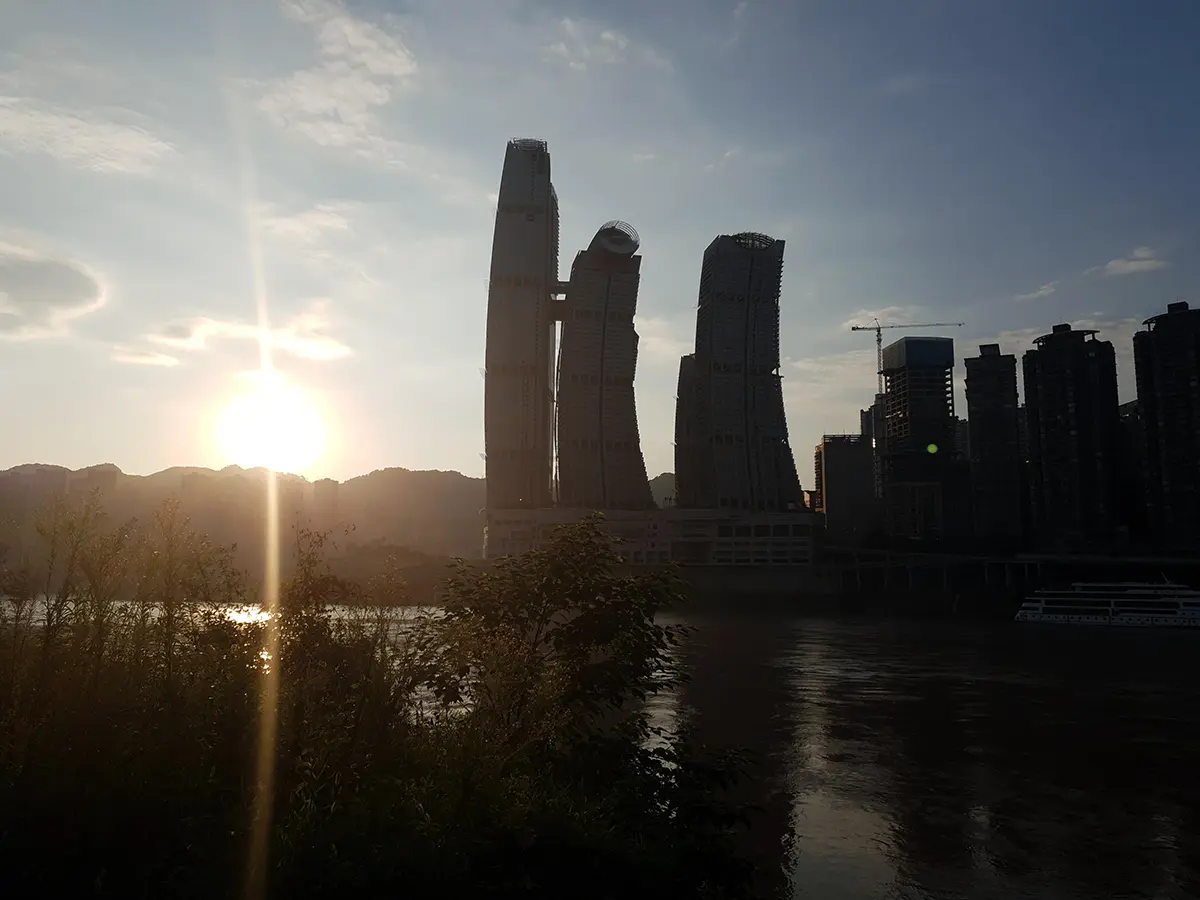There are meals, and then there are experiences. A bubbling Chongqing hot pot—a roiling, crimson cauldron spitting fragrant steam and studded with a seemingly impossible number of chiles—is firmly in the latter category.

For many, dishes like this, or a fiery bowl of Chongqing xiaomian noodles, represent the absolute limit of spiciness. They are a challenge, a dare, a culinary Everest.
This intimidating reputation raises a crucial question: Can food this aggressively hot still be considered “complex”? Is there room for nuance in a sea of chiles?
The answer is an emphatic yes.
The genius of Chongqing’s cuisine is not that it ignores complexity in favor of heat; it’s that it uses intense heat as the vibrant, dynamic stage upon which a symphony of other flavors and textures perform.
To understand these dishes is to learn to taste through the fire, not just the fire itself.
The Fragrant Foundation: It All Starts with Oil
The first secret to Chongqing’s complexity is that the heat is not just about capsaicin; it’s about aroma (xiāngwèi, 香味). The foundation of these dishes is a meticulously prepared chili oil or hot pot base. This isn’t just a matter of dumping chiles into broth. It involves:
A Rich Base Fat:
For hot pot, this is often rendered beef tallow (niúyóu), which gives the broth a profound richness and mouthfeel that vegetable oil cannot replicate.

A Symphony of Chiles:
Chefs use a blend of different chiles for different purposes—some, like the long erjingtiao, are prized for their deep red color and fragrance, while others, like the Facing Heaven chile (chaotianjiao), are there to provide raw, potent heat.
The Málà Duo:
Sichuan peppercorns and chiles are toasted and bloomed in the hot fat, a process which not only extracts their heat and numbing compounds but, more importantly, infuses the oil with their incredible floral and smoky aromas.
This fragrant, complex oil becomes the medium that carries all the other flavors. The heat is the first thing you notice, but the deep, layered aroma is what makes it so compelling.
The Art of the Bowl: constructing the Layers
Let’s look at the specific dishes. The complexity isn’t just in the broth or oil, but in the combination of ingredients that come together right before you eat.
Chongqing Hot Pot (火锅):
The broth itself is already a complex brew of the base oil, fermented broad bean paste (doubanjiang), fermented black beans (douchi), ginger, garlic, and a host of other spices like star anise and cardamom. The true complexity is revealed in the act of eating. A simple slice of beef or a lotus root doesn’t just get “hot”—it gets coated in the rich tallow, absorbs the savory broth, picks up the numbing tingle, and still retains its own essential flavor and texture.
Noodles (Dandan Mian & Xiaomian)
The soul of a great Chongqing noodle dish is the “seasoning bowl” prepared before the noodles are even added. It’s a carefully constructed sauce containing over a dozen ingredients. The chili oil is just one component. Below it, you’ll find soy sauce, Zhenjiang black vinegar for a sharp tang, sesame paste for creaminess, ground Sichuan peppercorn powder, garlic, and crucially, textural elements like roasted peanuts and savory pickled vegetables (yacai or zha cai). When you mix the noodles, you are creating a perfect bite that is simultaneously spicy, numbing, savory, sour, nutty, and crunchy.


Wontons in Red Oil (Hóng Yóu Chāoshǒu):
This dish is a masterclass in contrast. You have the delicate, savory pork filling of the wonton, a study in subtlety. It’s then bathed in a sauce that is intensely fragrant and spicy, but also balanced with the sweetness of sugar and the acidity of black vinegar. The complexity comes from the interplay between the delicate wonton and its aggressive, flavorful bath.
The Philosophy of Fire: It’s Meant to Be Lively
The intensity of Chongqing’s food is also deeply cultural. The city is famous for its “hot and noisy” (rènào, 热闹) atmosphere, a bustling, energetic vibe that the food perfectly reflects. It’s a social cuisine meant to be eaten with friends, to make you sweat, to get your heart pumping. The intense Málà isn’t just for flavor; it’s to create a memorable, communal, and invigorating experience.
So yes, Chongqing’s cuisine can be breathtakingly spicy. But the heat is never the only story. It is the brilliant, loud, and exciting opening act that prepares your palate for the rich, nuanced, and deeply satisfying performance of flavors to come.


Leave a Reply